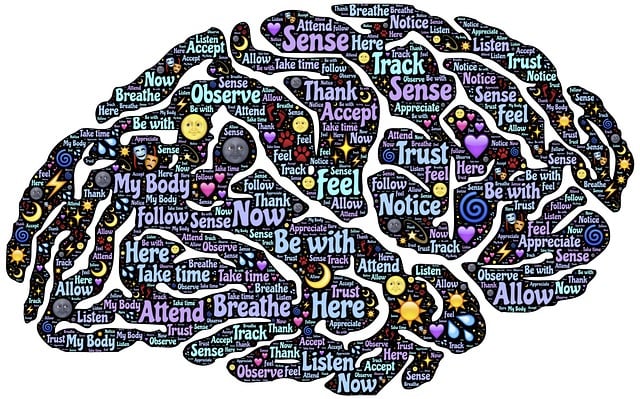Mental wellness journaling provides a creative and accessible therapy for children dealing with psychosis or other mental health challenges, helping them manage emotions and process traumatic experiences. By setting clear, achievable goals tailored to individual needs, journaling encourages emotional expression, mood tracking, conflict resolution, and personal growth, complementing traditional therapy sessions. Creating a safe, supportive space with creative tools and guidance from the Mental Wellness Podcast Series fosters trust, vulnerability, and open expression. Journaling aids children in navigating their mental wellness journey, managing symptoms like hallucinations and delusions, reducing stress, and proactively enhancing overall well-being.
Mental wellness journaling is an empowering tool for children, offering a creative outlet for processing emotions and experiences. This article guides parents and caregivers on implementing this practice, focusing on mental wellness journaling for kids, particularly those dealing with psychosis. We explore strategies like identifying achievable goals, setting up a supportive writing environment, and unique techniques tailored to enhance engagement. By integrating these insights, you can facilitate a therapeutic journey, nurturing resilience and emotional intelligence in children.
- Understanding Mental Wellness Journaling for Children
- Identifying and Setting Effective Journaling Goals
- Creating a Therapeutic Environment for Writing
- Techniques to Support Children with Psychosis through Journaling
Understanding Mental Wellness Journaling for Children

Mental wellness journaling can be a powerful tool to support children’s emotional and psychological well-being. Unlike traditional therapy sessions, journaling allows kids to express themselves in a private and creative manner, making it an accessible coping strategy for younger individuals. Through this practice, children can learn to identify and manage their emotions, process challenging experiences, and develop essential coping skills.
For instance, mental wellness journals can be used as a safe space for children to explore their thoughts, especially those dealing with psychosis or other mental health challenges. By encouraging regular journaling, healthcare providers can enhance communication strategies, allowing kids to open up about their feelings and symptoms in their own time and at their comfort level. This practice also fosters cultural competency training by promoting understanding between the child and their healthcare provider, ultimately contributing to improved care and treatment outcomes.
Identifying and Setting Effective Journaling Goals

Setting clear and achievable goals is a fundamental step in making mental wellness journaling a rewarding practice. For children experiencing psychosis or other mental health challenges, tailored journaling goals can serve as a powerful tool in their therapy journey. These goals should be specific, measurable, and relevant to their individual needs. For instance, a goal could be to identify and express emotions related to recent traumatic events, fostering better coping mechanisms. Alternatively, a child might aim to track their moods daily to recognize patterns and triggers for depression prevention.
Journaling can also support conflict resolution techniques by encouraging children to reflect on interpersonal interactions and explore healthy ways of communicating. This process allows them to gain insights into their behaviors and emotions during conflicts, fostering personal growth and improved social interactions. By setting such goals, children engage in a form of self-care that complements traditional therapy sessions, providing a space for introspection, emotional exploration, and the development of effective coping strategies.
Creating a Therapeutic Environment for Writing

Creating a safe and supportive space is paramount when encouraging children to engage in mental wellness journaling. This therapeutic environment should foster trust and encourage vulnerability. Make sure the setting is comfortable, free from distractions, and respects the child’s privacy. Incorporate elements that promote calmness, such as soft lighting, soothing music, or even a favorite stuffed animal or blanket.
For children experiencing psychosis or other mental health challenges, this space can serve as a sanctuary where they feel understood and accepted. Consider incorporating creative elements like colored pens, markers, or stickers to make the journaling process more engaging and less intimidating. This approach aligns with the concept of Emotional Well-being Promotion Techniques, creating a sense of security that encourages open expression. Additionally, the Mental Wellness Podcast Series Production can offer inspiration and guidance for both children and parents navigating these discussions in a non-traditional format.
Techniques to Support Children with Psychosis through Journaling

Journaling can be a powerful tool to support children experiencing psychosis and navigate their mental wellness journey. By encouraging them to express their thoughts and emotions on paper, therapists can help young individuals gain insight into their experiences and develop coping strategies. One effective technique is guided visualization, where the child is prompted to describe their feelings as if they were characters in a story, allowing for symbolic representation and easier exploration of complex emotions.
This method facilitates conversation around symptoms, such as hallucinations or delusions, and provides an opportunity to practice emotional regulation techniques. Additionally, journaling can be used to teach stress reduction methods and burnout prevention strategies. Simple exercises like rating daily stress levels, identifying triggers, and writing positive affirmations can empower children to manage their mental health proactively. Through regular expression of thoughts, they can develop a better understanding of themselves, improve emotional intelligence, and enhance overall well-being.
Mental wellness journaling offers a powerful therapeutic tool for children, especially those navigating psychosis. By understanding its benefits and implementing effective strategies, parents and caregivers can create a supportive environment that fosters mental resilience. Setting specific goals and utilizing various writing techniques can make this practice engaging and accessible. Journaling becomes a safe space for expression, allowing children to process emotions, gain insights, and develop healthy coping mechanisms. With continued research and support, mental wellness journaling can revolutionize therapy for children with psychosis, providing them with valuable self-care practices for a brighter future.








